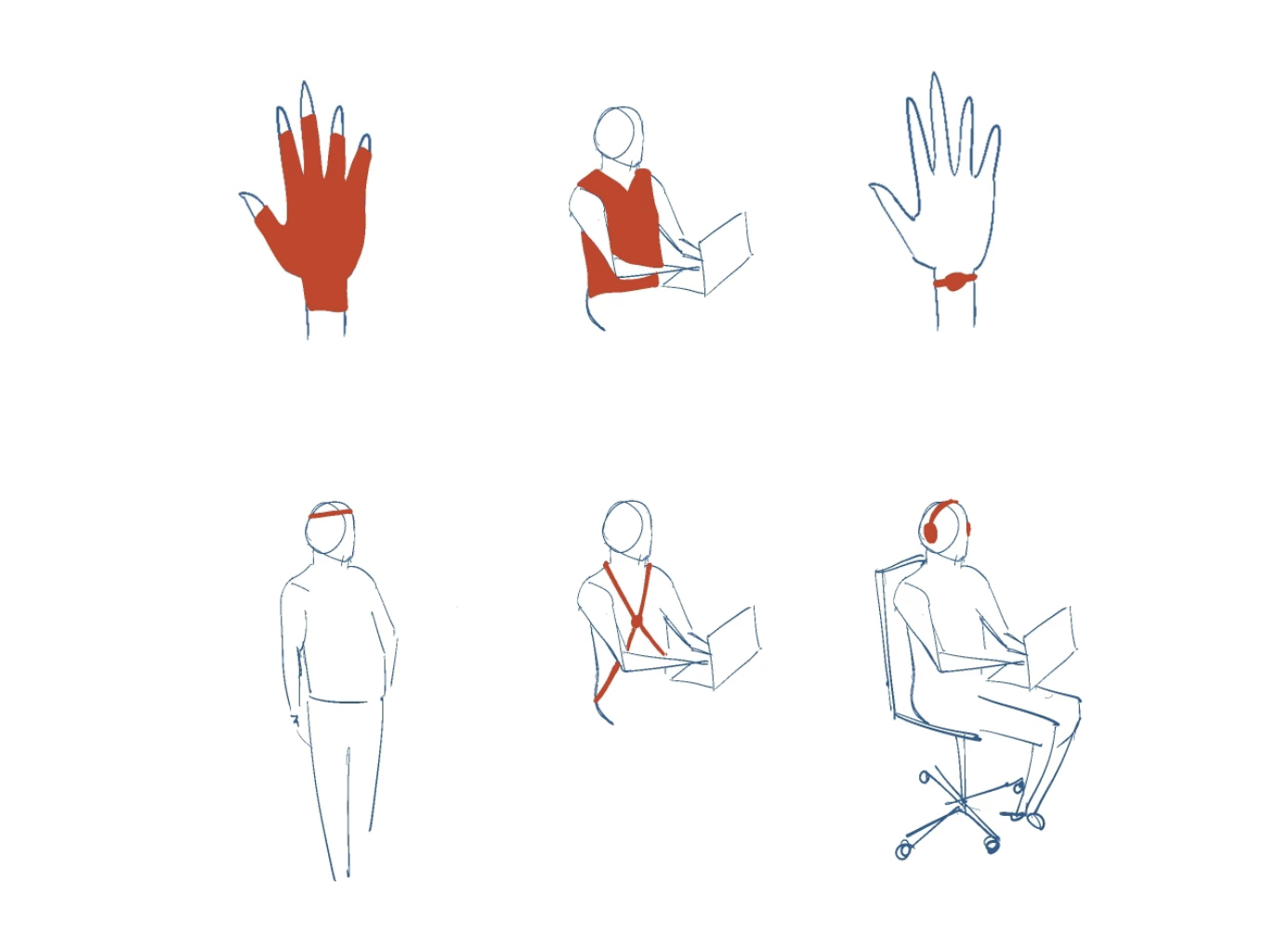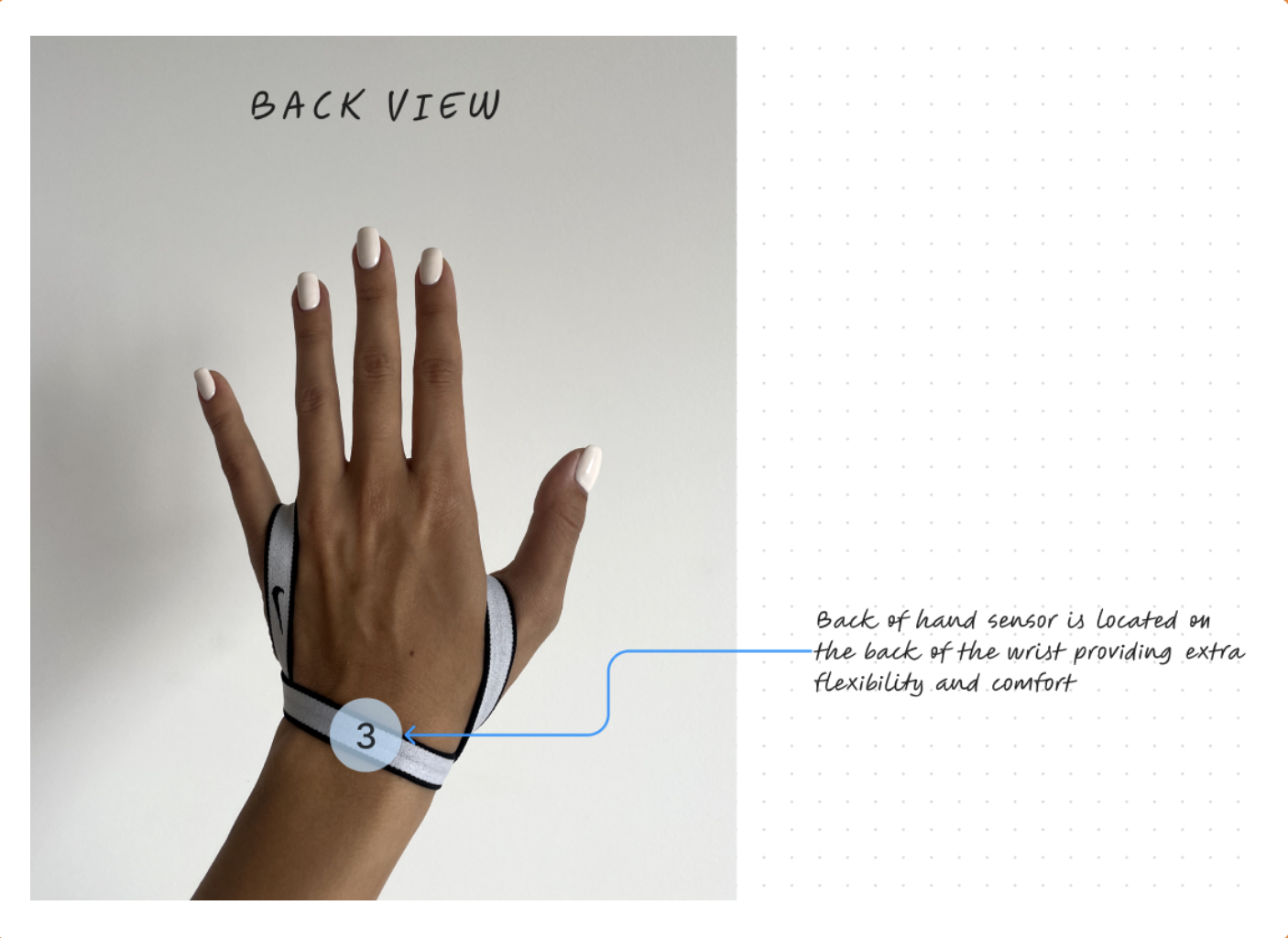Hapi,
UC Irvine
Problem: As Q3 reviews approach, employees and managers seek ways to improve productivity without compromising well-being. While research supports habit formation and cognitive restructuring, employees lack accessible tools to recognize stress patterns and integrate healthy habits into their routines—limiting both performance and wellness. How might we design
A tool that helps desk-based employees reconnect with their biological clues to build sustainable work habits that enhance well-being and productivity.
Solution: Through ethnographic observation, the team discovered that employees often lose awareness of their bodily stress signals while working. This insight informed the design of a wearable device with sensors on the palm and wrist to monitor heart rate, skin conductance, temperature, movement, and ambient noise. Paired with an AI-powered app that analyzes calendar data and emotional tone in workplace communications, the system offers real-time insights and habit suggestions. The approach emphasized intuitive UX, user privacy, and comfort—resulting in a tool that empowers employees to manage stress, adjust schedules, and improve overall performance.












